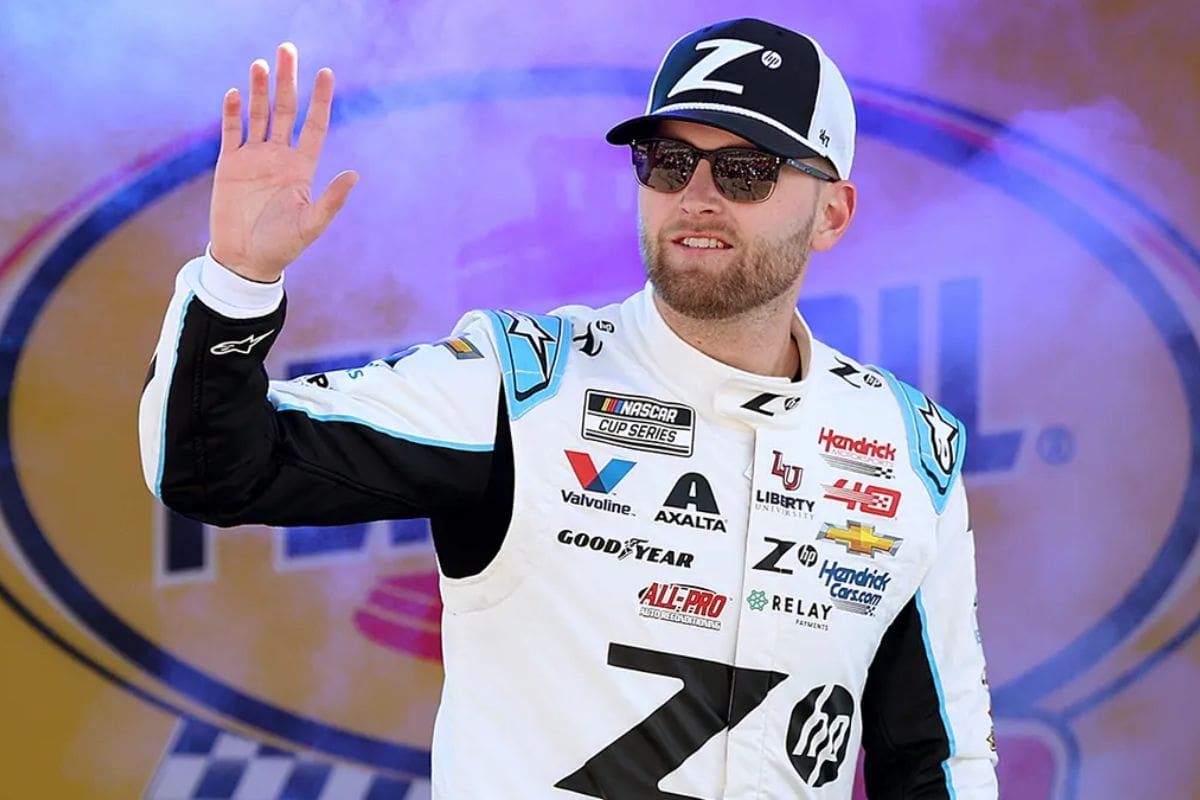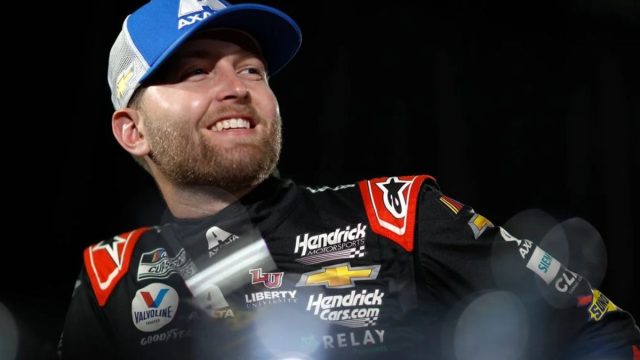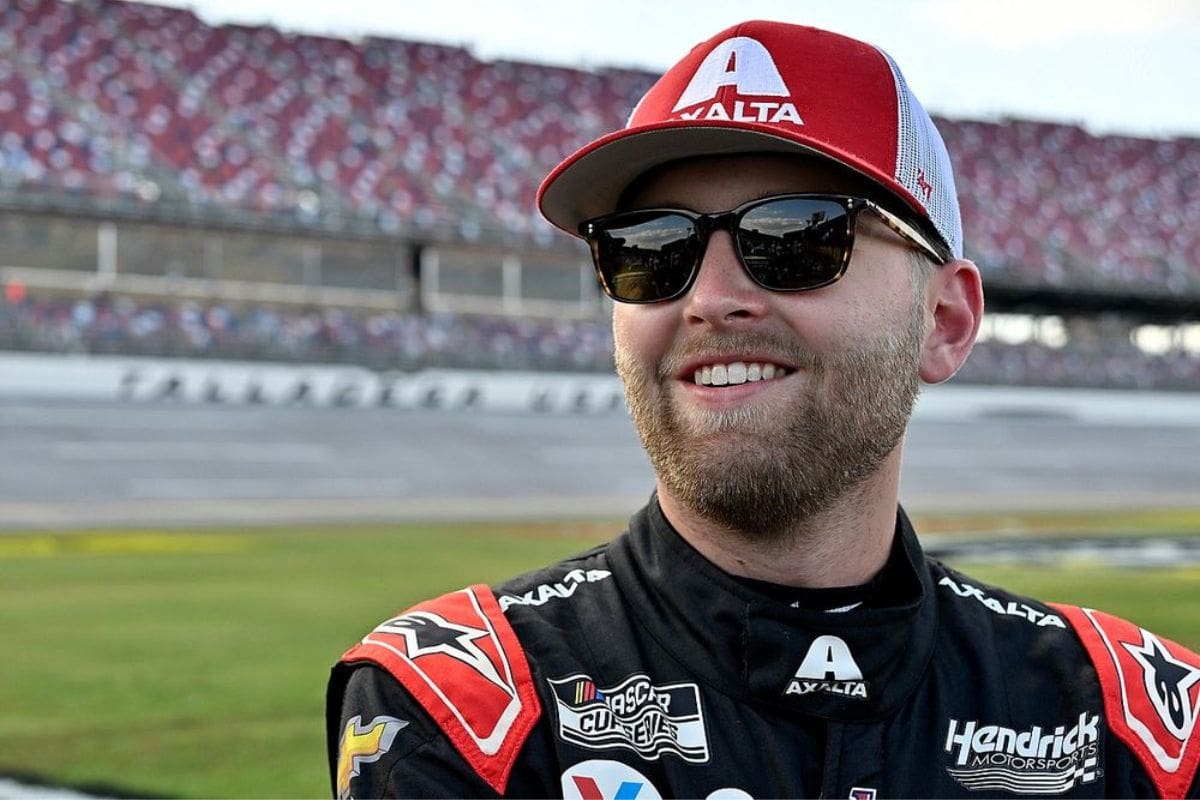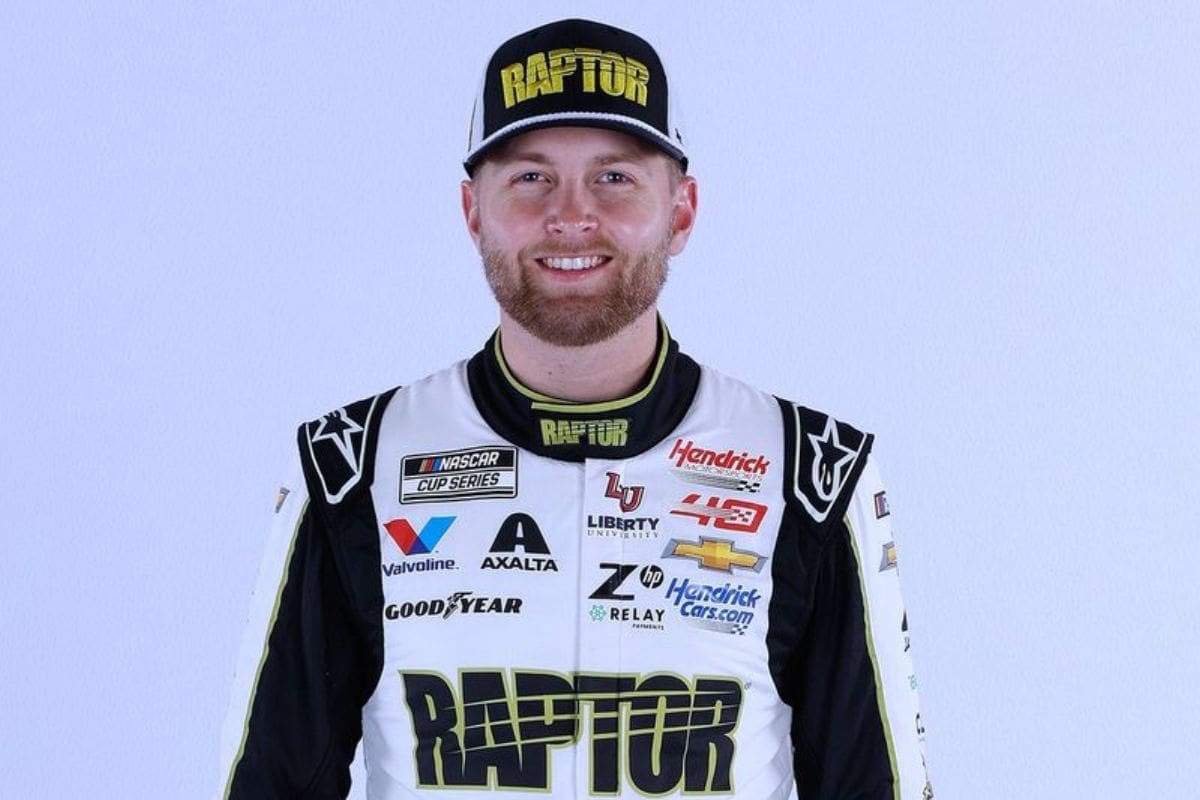Byron Rates Texas Clash: William Byron’s clear ‘ten out of ten’ rating for his performance at the Texas Motor Speedway covers more than just a self-assured evaluation. His last-lap move, marked by audacity and precise execution, not only secured his victory but also challenged the conventional racing areas.
Key Takeaways
- William Byron rated his clash last-lap move in the Texas race a ‘ten out of ten’.
- His rating reflects self-confidence and approval of his risky driving tactics.
- Byron’s bold claim highlights his readiness to adopt similar strategies in future races.
- This statement has sparked mixed reactions within the racing community, highlighting differing views on aggressive racing.
- Byron’s stance aligns with NASCAR’s competitive ethos, emphasizing tough decision-making in critical race moments.
Late-Race Drama Unfolds at Texas Motor Speedway
The closing stages in AutoTrader EchoPark Automotive 400 at Texas Motor Speedway were marked by unexpected twists, as Denny Hamlin’s crash triggered a wild and dramatic conclusion to the race. As the laps declined, the tension among the drivers and teams escalated, converging on a climax that few could have predicted.
This critical moment reshaped the competitive landscape, thrusting other racers into a spotlight they might not have anticipated as the checkered flag neared. The dynamics of racing were vividly illustrated in these final laps. Teams readjusted strategies in real-time, drivers recalculated risks, and the audience watched as the unfolding drama rewrote narratives in seconds.
As Chase Elliott seized the white flag, indicating the final lap, the intensity peaked. Ross Chastain encountered William Byron in a moment fraught with significant consequences. Their collision was not just a mere touch of bumpers; it was a notable clash that sent Chastain spiraling out of control, his hopes for a podium finish dashed in an instant.
William Byron’s Post-Race Response
Reflecting on the race’s controversial conclusion, William Byron firmly stood by his decisions, expressing readiness to replicate his move under similar circumstances in the future. This unapologetic stance highlights a strategic resilience and a deep understanding of the intense competition in racing. Byron’s resolve in the face of controversy emphasizes his commitment to aggressive racing tactics, which he thinks necessary and effective in the pursuit of victory.
Byron’s comments post-race stirred a mix of admiration and criticism within the racing community. His forthright admission that he would not alter his race strategy even after the incident provides insight into the mindset of a determined competitor.
Byron’s Apologetic Post-Race Attitude Turns
Initially apologetic, William Byron’s post-race behavior shifted markedly as he later defended his controversial last-lap tactic with minimal regret, emphasizing the competitive nature of racing. This contrast highlights the intricate dynamics often present in professional motorsports.
“We haven’t spoken yet, I haven’t reached out to him, but I am sure we will get acquainted later this week, but yeah, I don’t. Nothing really changes for me. My perspective, we just came together and in a spot there, he was coming down the track to try to cover my run and I was just making the corner exit like I anticipated and being not where he would be on the exit so yeah it’s unfortunate but it’s racing on the last lap and I just kind of do that ten out of ten times probably.” – Byron
William Byron had a scheduled media availability today. What he said about the last-lap wreck with Ross Chastain and why he would have made the same move every time on the last lap. @NASCARONFOX pic.twitter.com/BdvrVN12fY
— Bob Pockrass (@bobpockrass) April 16, 2024
- Initial Apology: Immediately following the race, Byron exhibited a typical apologetic tone, which is often expected in the heat of post-race scrutiny. This suggests an awareness of the broader implications of his actions on his public image and professional relationships.
- Defense of Actions: By stating that the collision was simply part of last-lap racing, Byron positions his actions within the accepted norms of racing culture, where pushing limits is often necessary and sometimes celebrated.
Assessment of William Byron’s Actions
When evaluating William Byron’s move during the final lap, it is important to take into account both the competitive ethos of NASCAR and the precedents set by similar actions in the sport’s history. Byron’s action, while aggressive, highlights the high-stakes nature of NASCAR racing where split-second decisions can define a season.
“I would yeah, I think probably the timing and the momentum that I had was probably like maybe a little bit different than what he thought or something. Once we talk we’ll discuss it and go from there.”-(BYRON)
Byron’s actions can be interpreted as a calculated risk taken within the context of Chastain’s own dominant racing style, which Byron implied might invite such responses. This perspective is central to understanding the dynamics at play: in a sport where aggressive driving can often lead to significant advancements, the lines between strategic moving and unsportsmanlike conduct blur.
Debate Over NASCAR Punishment
The debate intensifies as the NASCAR community grapples with whether William Byron’s last-lap actions against Ross Chastain merit disciplinary measures from the governing body. At the heart of this discussion are varying perspectives on the nature of racing incidents versus deliberate actions that compromise the fairness and safety of the sport.
- Precedents in Punishment: Historical actions taken by NASCAR in similar situations often highlight a precedent of strict penalties for intentional wrecking. Comparing Byron’s incident to past cases can provide a framework for consistency in judgment.
- Racing Culture and Aggressiveness: The ethos of NASCAR includes a level of assertiveness and competitive aggressiveness that is expected and often celebrated. Distinguishing between hard racing and punishable offenses is a detailed task that requires deep understanding of the sport’s dynamics.

News in Brief: Byron Rates Texas Clash
William Byron’s self-assigned perfect score for his move in the Texas Motor Speedway incident highlights a deliberate embrace of assertive racing tactics within NASCAR. This unapologetic stance not only showcases his personal racing philosophy but also influences the broader norms and expectations of conduct in motorsports scenarios.
Additionally, his actions and subsequent bold self-assessment may spark discussions regarding the adequacy of regulatory frameworks in addressing such displays of aggressive driving within professional racing.
Our Reader’s Queries
Q. Who won the Daytona 500 today 2024?
A. In a momentous triumph, William Byron clinched victory at the 2024 DAYTONA 500, marking a poignant anniversary for Hendrick Motorsports. It was exactly 40 years to the day since the renowned team made its debut in the NASCAR Cup Series back in 1984.
Q. Has William Byron ever won a NASCAR race?
A. William Byron is currently in the midst of his seventh season as the driver of the No. 24 Hendrick Motorsports Chevrolet. With an impressive tally of 13 career victories under his belt, Byron’s most recent victory came in April 2024 during the Cook Out 400 at Martinsville Speedway.
Q. Who is the number 24 race car driver?
A. William Byron pilots the No. 24 machine for Hendrick Motorsports, showcasing his talent and determination on the NASCAR circuit.
ALSO READ: William Byron Reveals Winning Secrets: Exclusive Insights with Dale Jr.


